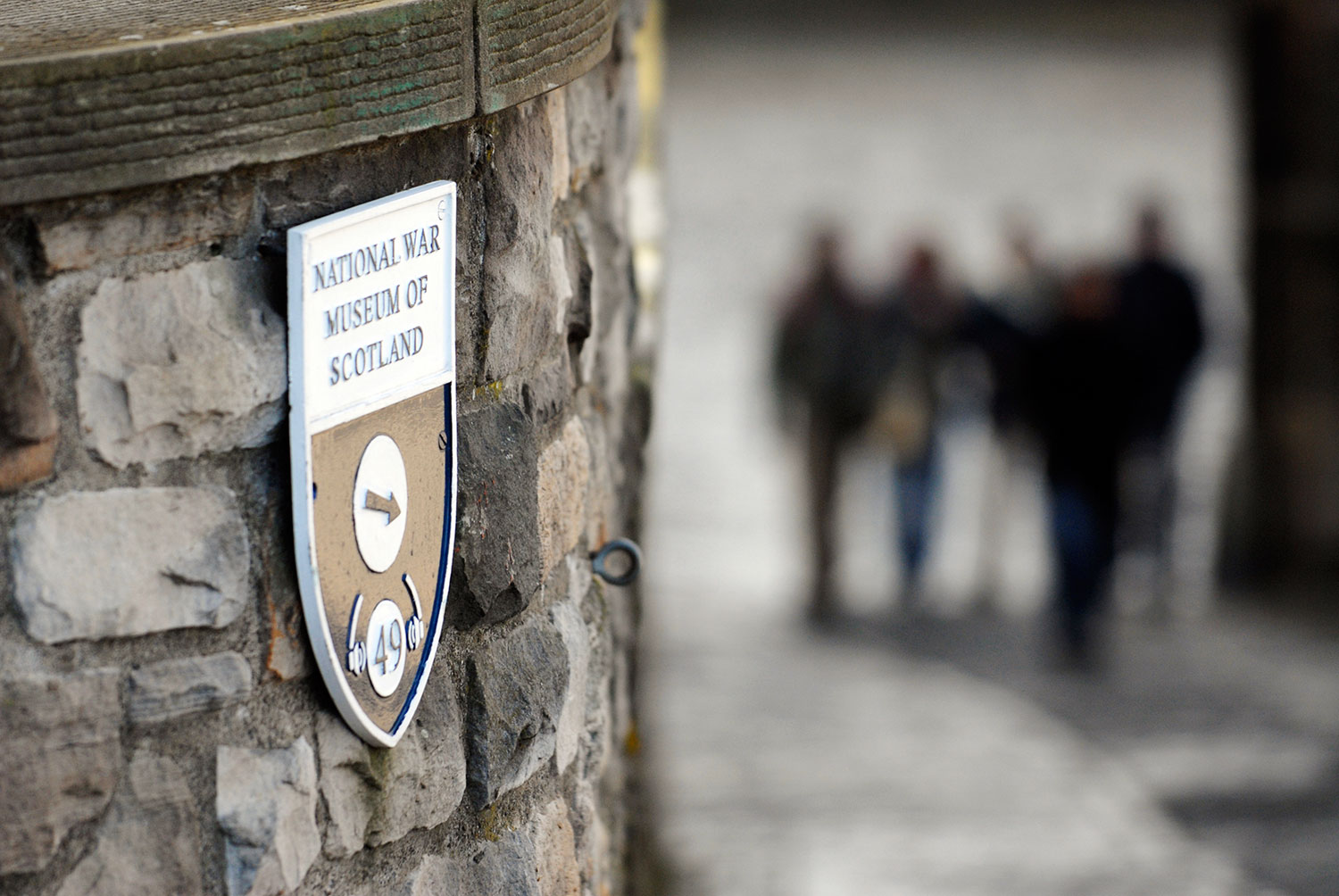As a senior curator at National Museums Scotland, I look after a number of varied collections, including rural life, Scottish collections (1918 to 1937) and something of an outlier, Robert Burns, Scotland’s national bard. I suspect he came under my ‘care’ as he was a son of the soil.
Over the years, I’ve been lucky enough to curate several exhibitions at the National War Museum which is inside Edinburgh Castle. What a great venue this is. I remember visiting Edinburgh and the castle (of course) when I was about 7 years old. Many years later I walked up to the War Museum to carry out work there; it was something of a thrill!

The current exhibition at the War Museum is The Poppy: A Symbol of Remembrance.
There has been much publicity around the centenary commemorations of the First World War with the poppy featuring heavily. We wanted to mark this milestone too, and highlighting the story of the poppy’s origins as a fundraiser and memorial was an ideal way to do it. Using objects, photographs and videos, we explore the origins of the poppy and the Scottish connection.
The inspiration for the original poppy appeal came from the popularity of Canadian John McCrae’s 1915 poem, In Flanders Fields. After the war, the idea of the artificial poppy as a symbol to raise funds for veterans came from the American Legion to the British Legion, and was closely associated with Earl Haig’s efforts on behalf of the welfare of veterans. Haig commanded the British Expeditionary Force on the Western Front from late 1915 until the end of the war.

The first Poppy Day in the UK was marked on 11 November 1921 when poppies were imported from France. In 1922, Earl Haig’s Poppy Factory opened in London, providing work for ex-service personnel injured during the Great War. The scheme was so successful that Lady Haig decided to open Scotland’s own Poppy Factory in 1926. The Edinburgh factory now produces around 5 million poppies and 8,000 wreaths annually, all handmade by former service personnel, all in receipt of a war pension from the government due to disability.

Poppy Scotland has been very generous in loaning a number of objects. Amongst my favourites is the poppy sent from France by a soldier in 1918. He’d picked the poppy, pressed it and sent it to a female in Scotland. Unfortunately, we don’t know if the recipient was his girlfriend, wife, sister or mother. Nor do we know if he survived the war.

Another one of my favourites is a waxed artificial poppy dating from the 1930s, which was made to be fitted to a car. I think it’s a great example of early marketing, especially when you remember how few cars were on the road at the time.

Not to be missed is the Controversy display case. This is where we’ve updated the story using a variety of objects, including white, black and purple poppies to represent other points of view. We’ve also included the poppy hijab, which made headlines in 2014.
I’m always keen to bring out the role of woman in history, so I’d encourage everyone to look out for the women who contributed to the success of the poppy as a fundraiser and symbol of remembrance. Along with Lady Dorothy Haig, there is also American Moina Michael and Frenchwoman Anna Guérin. Michael (known as the “Poppy Lady”) promoted the idea of selling artificial poppies to support wounded veterans and war widows, and Guérin persuaded Earl Haig that the British Legion should adopt the symbol as an emblem for the Legion (after making arrangements for the first nationwide distribution of poppies in America with Michael).
A tremendous legacy to grow out of one simple poem.
The Poppy: A Symbol of Remembrance is running at the National War Museum at Edinburgh Castle until 27 January 2019. Admission is free with entrance to the Castle.
